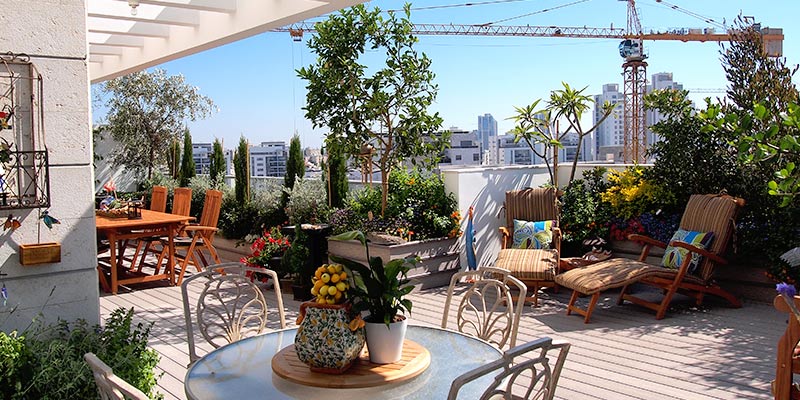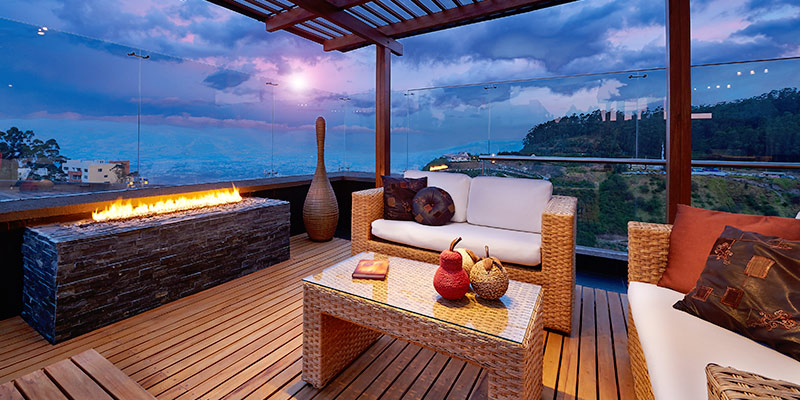Every square meter in your home is precious, and fine weather, terraces and balconies become more and more important. Design ideas and choice of furniture are both very important, but ensure your choices minimise risks and ensure safety. Read our tips to ensure that these goals are met.
Terrace/ balcony equipment safety rules

Keep Reading...
Balconies and terraces are built just like buildings (which is to say, out of a mix of steel, concrete and wood) and come in essentially three different construction styles. A cantilevered balcony protrudes directly from the face of a building, seeming to float with no visible supports. Cantilevered balconies are planned and installed as part of a building’s larger design—they can’t be added on after construction is finished. By contrast, a hung balcony consists of a large plate or slab connected to the building, supported and stabilized from above by stainless steel cables. Finally, a stacked balcony requires the least predesign. Stacked balconies are a separate structure from the building, and are supported using vertical pillars sunk into the ground to support the weight of the balcony.
User Beware
The most common problem affecting balconies and terraces is owner failure. These outdoor spaces can be installed properly, woven into the building structure effectively and efficiently, but they need to be maintained and kept up in order to remain safe.
As a building owner, resident or board manager, you might not be able to eyeball a balcony and gauge whether it is safe and sound, but there are some signs of deterioration you can spot that necessitate calling an inspector. Individual owners should inspect their balconies for cracks, rust, salt stains or discoloration, which are all signs that the metal or wood might be compromised or deteriorating. Take a look at the whole structure, both the roof and the floor, as well as railings and poles. Bellet encourages owners to be proactive, “You don’t need to be an expert to see if the railing is loose, or the balcony needs securement. Typically, if you think how old the average balcony railing is on a co-op or condominium, do the math.
Professional Intervention
Like identifying and tracking a suspicious mole on your body, these marks or changes in color on your balcony might not necessary signal disaster to come, but it’s important to be aware of them and recognize any changes that occur over time. If you’ve identified any of these signs of weakness, a professional inspector can be hired to take a closer look and also begin to track the status of your exterior structures.
Proper maintenance starts with establishing a baseline for a balcony or porch’s materials and conditions and knowing how they age each year. “The maintenance man should do a visual inspection, documenting any problems he sees, If there’s a crack two inches long, he should record it on a spreadsheet. That establishes a benchmark early on.
As they get to know your outdoor space, balcony pros will check a number of points. “They will look for rusting on welds and bolts associated with the balcony supporting structure, the decking material, the connection points of balconies to building structure, guard rails and anything else that may be connected to the balcony,” says one building professional. “They also make sure that welds or bolts are not broken, bent or damaged, or loosening over time; and that the rusting does not compromise the structure support.”
The next time you are lounging on your balcony on a lazy Sunday, listening to mellow sounds on your iPod, slip off your sunglasses and take a close look at your own piece of the great outdoors. Identifying a warning sign early and getting it fixed will mean you can enjoy your sky-high oasis for years to come, and maybe even finally figure out how to grill a perfect medium-rare burger.








Leave a Reply